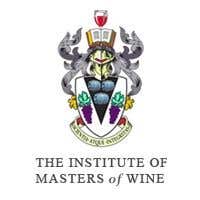Reproduced below are this year's Master of Wine practical examination papers, which occupied my time for most of last week – and for most of the last six months too. A report on my travails last week is coming soon.
Paper one is for white wines, paper two for reds and paper three is mixed, which usually involves sparkling, sweet and fortified wines, although may also include regular table wines. There is a time limit of two and a quarter hours for each paper.
The numbers following each question indicate the allocation of marks, with a total of 300 marks available for each paper (and the pass mark is 195). The crib sheet of wines follows below.
So now you have everything you need to reproduce the experience at home, should you harbour such a perverse desire!
Paper one is for white wines, paper two for reds and paper three is mixed, which usually involves sparkling, sweet and fortified wines, although may also include regular table wines. There is a time limit of two and a quarter hours for each paper.
The numbers following each question indicate the allocation of marks, with a total of 300 marks available for each paper (and the pass mark is 195). The crib sheet of wines follows below.
So now you have everything you need to reproduce the experience at home, should you harbour such a perverse desire!
PRACTICAL PAPER 1
1. Wines 1-4 are all from the same region of origin.
For each wine:
a) Identify the specific origin as closely as possible (4 x 10)
b) Identify the grape variety(ies) (4 x 6)
c) Comment on the winemaking (4 x 3)
d) Discuss the quality with reference to state of maturity (4 x 6)
2. Wines 5-7 are all made from the same single grape variety and come from different countries.
With reference to all three wines:
a) Identify the grape variety (15)
Then for each wine:
b) Identify the origin as closely as possible (3 x 10)
c) Discuss the quality with particular reference to winemaking techniques employed (3 x 10)
3. Wines 8-10 are all from the same region and are from the same vintage.
For each wine:
a) Identify the specific origin as closely as possible (3 x 10)
With reference to all three wines:
b) Compare the quality of the wines, within the context of the region of origin (30)
c) Identify the vintage (15)
4. Wines 11 and 12 are both made from the same predominant grape variety.
With reference to both wines:
a) Identify the predominant grape variety (18)
Then for each wine:
b) Identify the region of origin (2 x 8)
c) Comment on the quality, style and potential for further ageing (2 x 8)
PRACTICAL PAPER 2
For each wine:
a) Identify the region of origin and grape variety(ies) (6 x 12)
b) Comment on the quality (within the context of the region of origin) and maturity (6 x 8)
c) Comment on the winemaking (6 x 5)
2. Wines 7-9 are from 3 different European countries, excluding France, Italy and Spain.
For each wine:
a) Identify the region of origin and grape variety(ies) (3 x 12)
b) Comment on the quality (within the context of the region of origin) and maturity (3 x 8)
c) Comment on the winemaking (3 x 5)
3. Wines 10-12 are from 3 different countries. All are made from the same predominant grape variety.
With reference to all three wines:
a) Identify the grape variety (15)
b) Comment on the quality (15)
c) Comment on the winemaking (15)
Then for each wine:
d) Identify the origin (3 x 10)
PRACTICAL PAPER 3
1. Wines 1 and 2 are from the same region and same producer. With reference to both wines:
a) Identify the region of origin as closely as possible (10)
b) Compare the most relevant winemaking techniques involved in the production of the wines (20)
c) Compare maturity and quality, stating which is the higher quality wine (20)
2. Wines 3-6 are each from a different country. Each is made predominantly from a different, single grape variety.
For each wine:
a) Identify the region of origin and the grape variety (4 x 15)
b) To whom is this wine most likely to appeal, and why? (4 x 10)
3. Wines 7 and 8 are from different countries. Each is made from the same, single grape variety.
With reference to both wines:
a) Identify the grape variety (10)
b) Compare the quality and methods of production. Discuss the balance between acidity and sweetness in these wines (30)
Then for each wine:
c) Identify the origin as closely as possible (2 x 5)
4. Wines 9-12 are all made from the same, single grape variety.
For all four wines:
a) Identify the grape variety, with reference to each wine (12)
For each wine:
b) Identify the most relevant production techniques evident in the wine (4 x 10)
c) State the alcohol level (4 x 5)
d) Comment on quality and style (4 x 7)
Wine List 2012
Paper 1
1 Ch de la Bretesche 2010 Muscadet Sèvre-et-Maine – 12% – Loire – France
2 Vigneau-Chevreau, Cuvée Silex Sec 2010 Vouvray – 13% – Loire – France
3 Henry Pellé, Cuvée Beatrice 2010 Menetou-Salon – 13% – Loire – France
4 Dom des Forges 2009 Coteaux du Layon – 12% – Loire – France
5 Forte Alto Pinot Grigio 2010 Alto Adige – 12% – Italy
6 Wither Hills Pinot Gris 2011 Marlborough – 13.5% – New Zealand
7 Zind-Humbrecht, Réserve Pinot Gris 2009 Alsace – 13.5% – France
8 J L Chavy, Perrières Premier Cru 2008 Puligny-Montrachet – 13.5% – Burgundy – France
9 Pierre Morey 2008 Meursault – 12.5% – Burgundy – France
10 Patrick Javillier 2008 Corton-Charlemagne 2008 – 13.5% – Burgundy – France
11 Tahbilk, Marsanne 2008 Nagambie Lakes – 13.5% – Victoria – Australia
12 Alain Graillot 2010 Crozes-Hermitage – 13% – Rhône – France
1 Ch de la Bretesche 2010 Muscadet Sèvre-et-Maine – 12% – Loire – France
2 Vigneau-Chevreau, Cuvée Silex Sec 2010 Vouvray – 13% – Loire – France
3 Henry Pellé, Cuvée Beatrice 2010 Menetou-Salon – 13% – Loire – France
4 Dom des Forges 2009 Coteaux du Layon – 12% – Loire – France
5 Forte Alto Pinot Grigio 2010 Alto Adige – 12% – Italy
6 Wither Hills Pinot Gris 2011 Marlborough – 13.5% – New Zealand
7 Zind-Humbrecht, Réserve Pinot Gris 2009 Alsace – 13.5% – France
8 J L Chavy, Perrières Premier Cru 2008 Puligny-Montrachet – 13.5% – Burgundy – France
9 Pierre Morey 2008 Meursault – 12.5% – Burgundy – France
10 Patrick Javillier 2008 Corton-Charlemagne 2008 – 13.5% – Burgundy – France
11 Tahbilk, Marsanne 2008 Nagambie Lakes – 13.5% – Victoria – Australia
12 Alain Graillot 2010 Crozes-Hermitage – 13% – Rhône – France
Paper 2
1 Santa Rita, 120 Carmenère 2010 Central Valley – 13.5% – Chile
2 Robert Mondavi Cabernet Sauvignon 2009 Napa Valley – 14.5% – California
3 Yalumba, The Cigar Cabernet Sauvignon 2009 Coonawarra – 14.5% – Australia
4 Glenelly, Lady May 2008 Stellenbosch – 14.5% – South Africa
5 Ch Quinault l'Enclos 2006 St-Émilion – 13.5% – Bordeaux – France
6 Rocca di Montegrossi Geremia 2007 IGT Toscana – 14.5% – Italy
7 Claus Preisinger 2008 Burgenland – 12.5% – Austria
8 Dow, Vale do Bomfin 2009 Douro – 14% – Portugal
9 Becker Pinot Noir 2009 Pfalz – 13% – Germany
10 JC Cellars, Fess Parker's Vineyard 2009 Santa Barbara – 14.8% – California
11 Alain Voge, Les Vieilles Vignes 2007 Cornas – 13% – Rhône – France
12 Mollydooker, The Boxer 2010 McLaren Vale – 16% – Australia
1 Santa Rita, 120 Carmenère 2010 Central Valley – 13.5% – Chile
2 Robert Mondavi Cabernet Sauvignon 2009 Napa Valley – 14.5% – California
3 Yalumba, The Cigar Cabernet Sauvignon 2009 Coonawarra – 14.5% – Australia
4 Glenelly, Lady May 2008 Stellenbosch – 14.5% – South Africa
5 Ch Quinault l'Enclos 2006 St-Émilion – 13.5% – Bordeaux – France
6 Rocca di Montegrossi Geremia 2007 IGT Toscana – 14.5% – Italy
7 Claus Preisinger 2008 Burgenland – 12.5% – Austria
8 Dow, Vale do Bomfin 2009 Douro – 14% – Portugal
9 Becker Pinot Noir 2009 Pfalz – 13% – Germany
10 JC Cellars, Fess Parker's Vineyard 2009 Santa Barbara – 14.8% – California
11 Alain Voge, Les Vieilles Vignes 2007 Cornas – 13% – Rhône – France
12 Mollydooker, The Boxer 2010 McLaren Vale – 16% – Australia
Paper 3
1 Louis Roederer 2004 Champagne – 12% – France
2 Louis Roederer NV Champagne – 12% – France
3 Huet, Pétillant 2005 Vouvray – 12% – Loire – France
4 Jacob's Creek, Sparkling Shiraz NV South Eastern Australia – 12.5% – Australia
5 Brancott Estate, Sparkling Sauvignon Blanc Brut NV Marlborough – 13% – New Zealand
6 Beringer, Sparkling Zinfandel Rosé NV California – 11% – California
7 Selbach-Oster, Junior Zeltinger Himmelreich Riesling Eiswein 2009 Mosel – 8% – Germany
8 Tamar Ridge, Kayena Botrytis Riesling 2009 Tasmania - 9% – Australia
1 Louis Roederer 2004 Champagne – 12% – France
2 Louis Roederer NV Champagne – 12% – France
3 Huet, Pétillant 2005 Vouvray – 12% – Loire – France
4 Jacob's Creek, Sparkling Shiraz NV South Eastern Australia – 12.5% – Australia
5 Brancott Estate, Sparkling Sauvignon Blanc Brut NV Marlborough – 13% – New Zealand
6 Beringer, Sparkling Zinfandel Rosé NV California – 11% – California
7 Selbach-Oster, Junior Zeltinger Himmelreich Riesling Eiswein 2009 Mosel – 8% – Germany
8 Tamar Ridge, Kayena Botrytis Riesling 2009 Tasmania - 9% – Australia
9 Martini NV Asti Spumante – 7.5% – Piemonte – Italy
10 [Producer not mentioned] Cuvée Reserve NV Rivesaltes – 15% – France
11 Barefoot Moscato NV California – 8.5% – California
12 Donnafugata, Ben Ryé 2009 Passito di Pantelleria – 14.5% – Sicily – Italy

